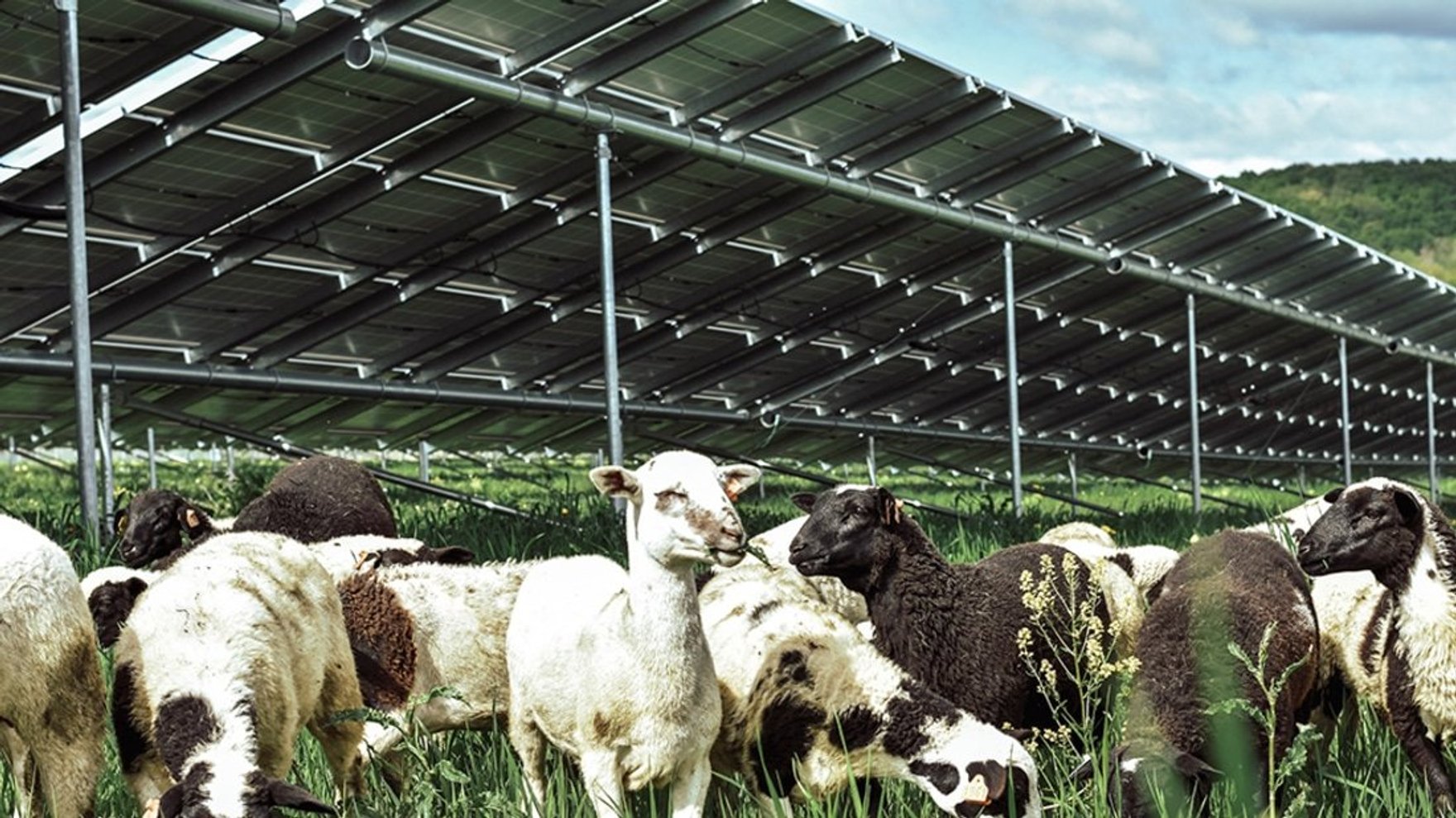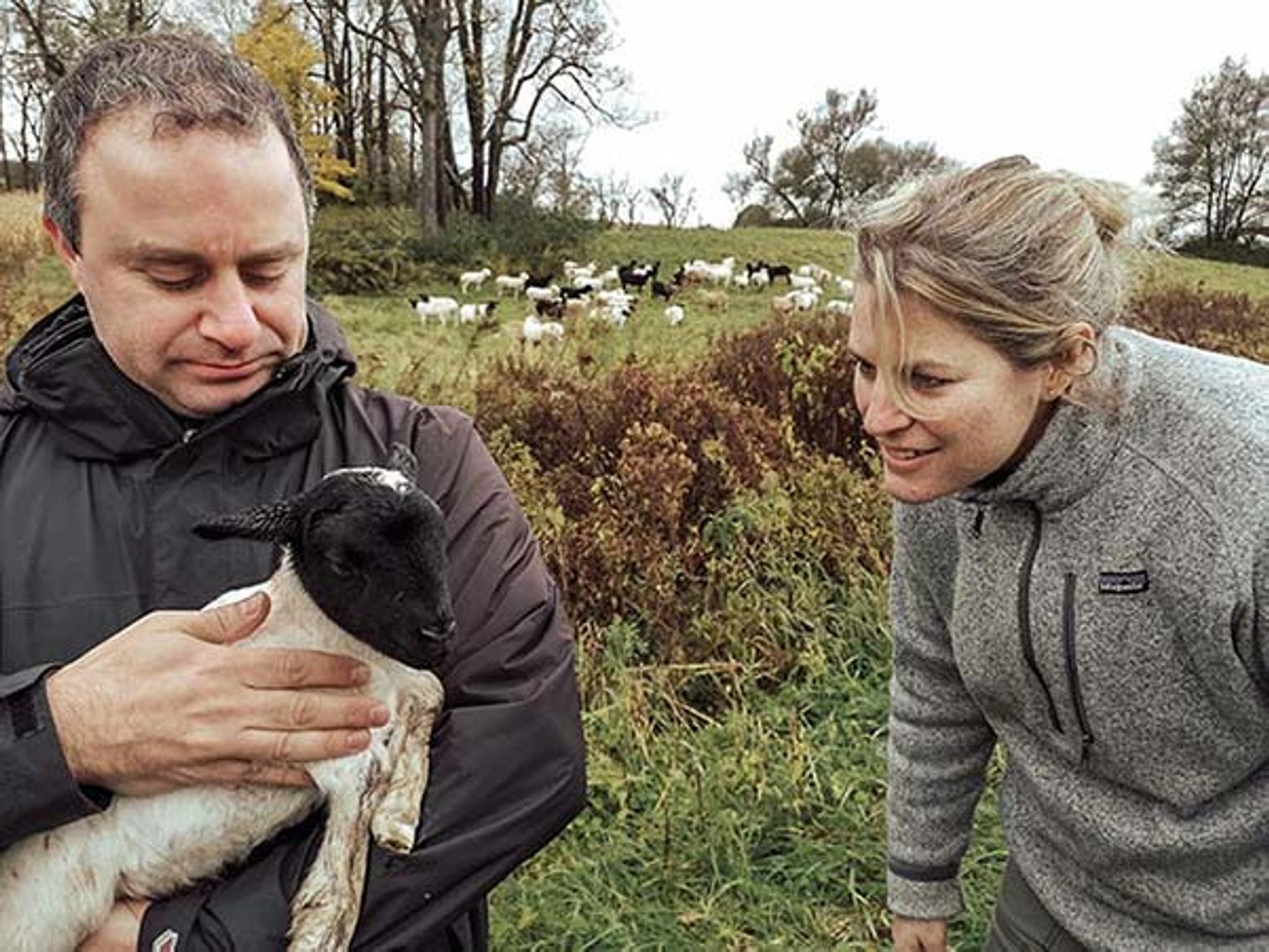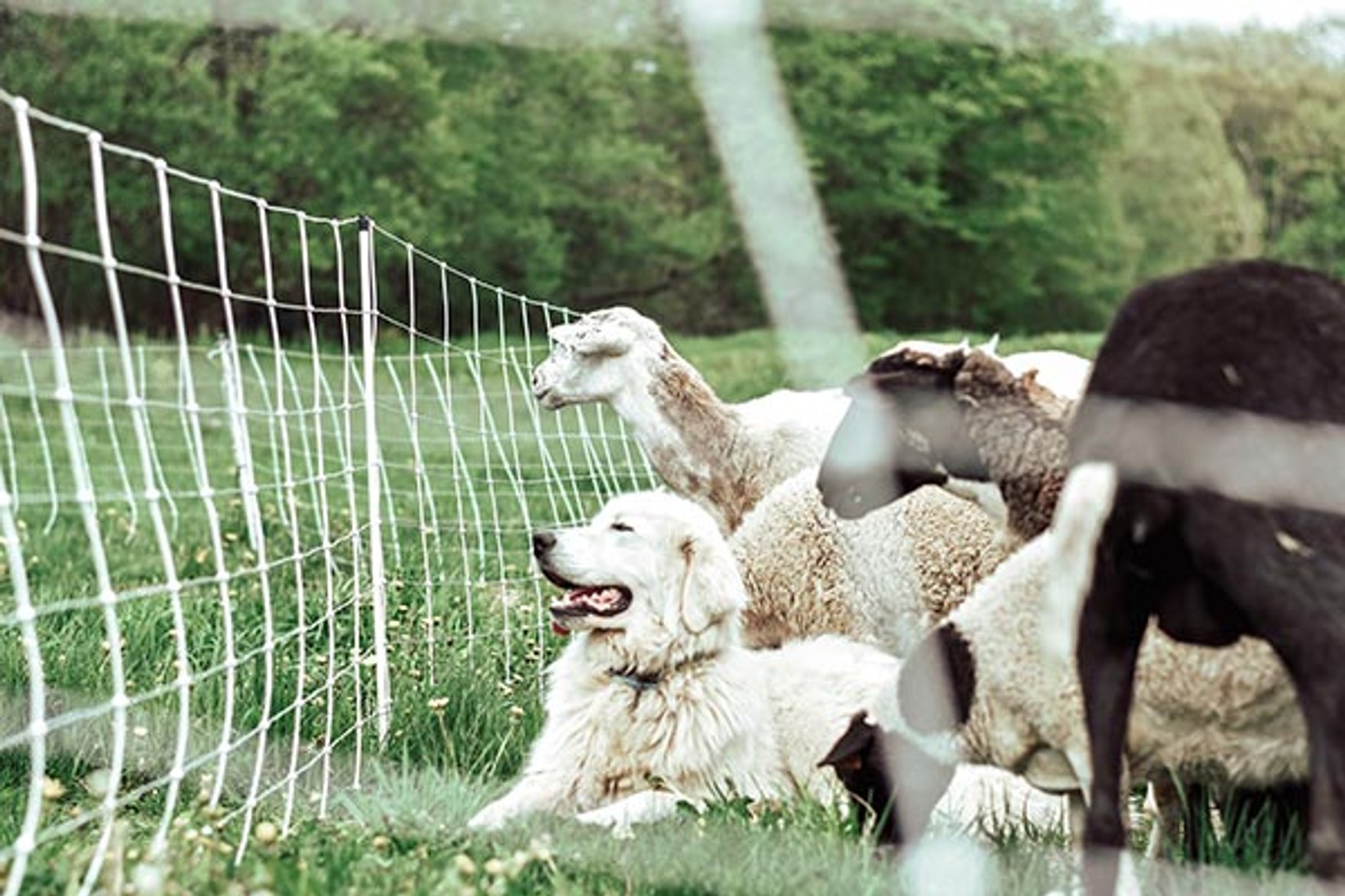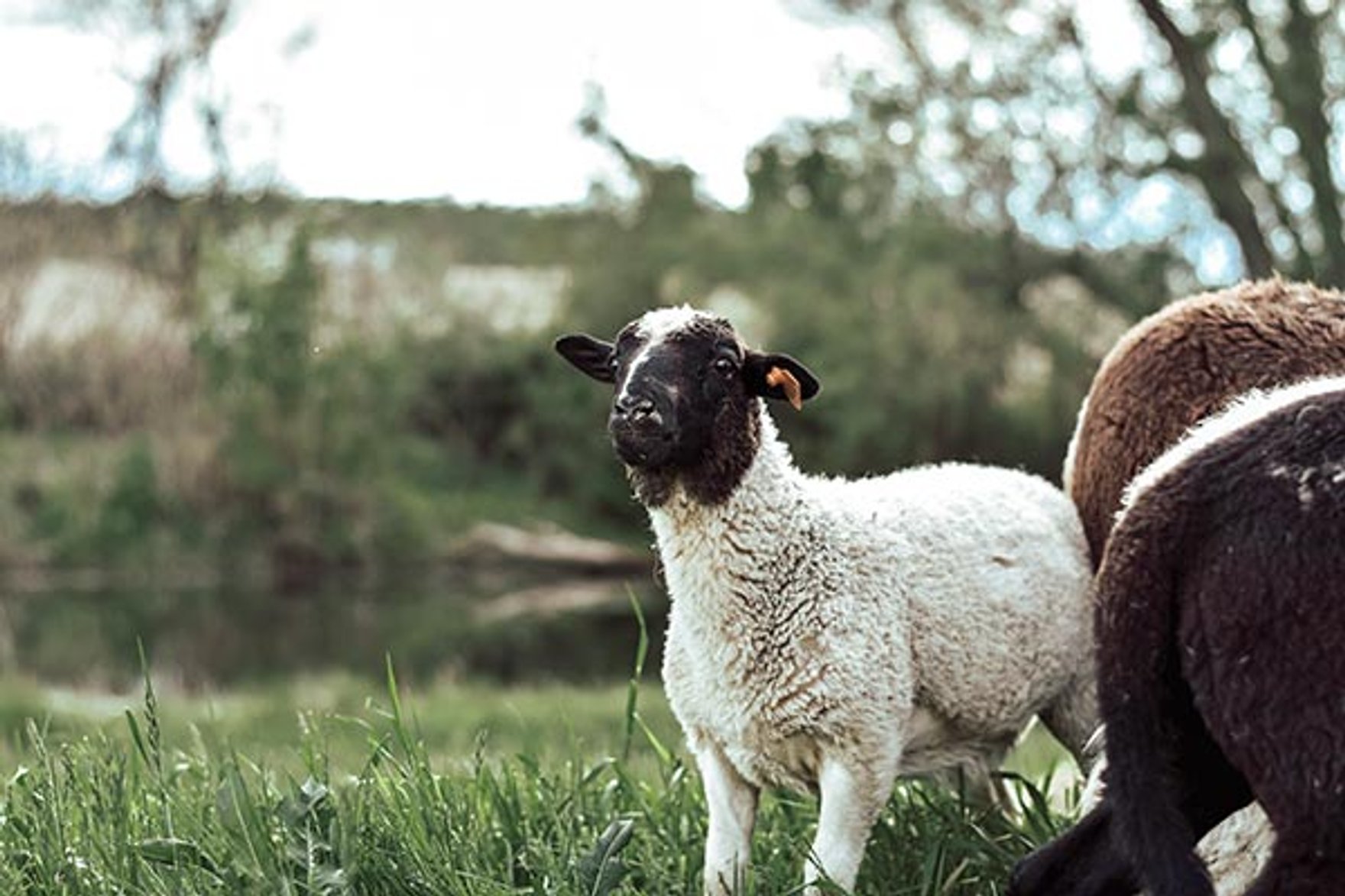
Right off the shoulder of Millard Hill Road in Newfield, NY is a scenic 30-acre sea of solar arrays with hues of blues, greens, and a sprinkle of native pollinator-friendly vegetation. At a quick glimpse, you might notice something moving through the tall grass in the meadow. Nexamp’s newest (and cutest) maintenance team: a flock of 150 sheep.
But how and why did a flock of 150 sheep get hired to be a part of a solar energy company?
It was a chilly October day in 2018 when we met Lexi Hain, founder of the American Solar Grazing Association, at the grand opening of our community solar farm in New York. Lexi invited us back to see her farm and meet a newborn lamb; little did we know, that solar energy was about to get a whole lot cuter.

Fast forward a few months and the sheep are being released at our Newfield community solar farm! As it turns out, a flock of these grass nibblers make an excellent maintenance team. These 4-legged Roombas pace up and down the field, grazing without stopping and intaking about 3-4% of their own body weight each in a day! Baaa-t that’s not all they are useful for.
Sheep grazing reduces mowing costs.
Mowing and the use of herbicides are the traditional choice for keeping weeds at bay. As if mowing through a solar farm wasn’t challenging enough when trying to reach those odd angles underneath panels; the use of gas-powered equipment and lethal herbicides are harmful to the environment. Sheep grazing can progressively improve the solar industry by fostering a lower cost source of clean energy maintenance.

Grazing supports beneficial vegetation.
Unlike mowing and plowing through a pollinator’s paradise, sheep can protect native vegetation and pollinator species because they are picky eaters. In fact, sheep enjoy eating many types of weeds and invasive species, such as poison ivy. While the sheep maintain local vegetation, pollinators are able to thrive in an environment without the threat of noise or toxic chemicals from herbicides.
Sheep improve soil fertility.
Sheep grazing does several things to improve soil fertility. When sheep excrete, they contribute their own manure along with microorganisms to the soil. Their hooves trample the manure back into the earth’s soil, promoting carbon sequestration and breaking down rich organic nutrients that are beneficial to soil, thus improving and increasing soil fertility. Sheep on a solar farm are continuously moved from one side of the land to another, to allow the pastured area to recover. Good management and the rotation of the sheep on a solar farm encourages the growth of deep perennial roots, further encouraging carbon sequestration.

It’s a new opportunity for farmers.
Grazing sheep on a solar farm helps maintain a rural landscape, adds additional income streams to local farmers, and preserves rural communities. New pastures and well-designed fencing contain the sheep and protects them from any predators outside the perimeter of the solar farm. In addition, the solar panels provide the sheep shelter from rain, wind and direct sun on scorching days, which allows farmers to sustain healthier flocks.
Community solar with Nexamp is helping residents across the region save money on their monthly electric bills while adding more renewable energy to the state’s power grid. Now, with the solar grazing program, we are helping local farmers tap into new revenue sources while maintaining our farms in a more sustainable manner. Solar grazing allows farmers to increase and diversify revenues in order to support food and other farm production. This is the first Nexamp solar farm in the solar grazing program and represents the beginning of a roll-out to other solar farms across New York and surrounding states. Interested in seeing what our 4-legged maintenance team is up to? Follow us on Instagram for some #solarsheep updates!